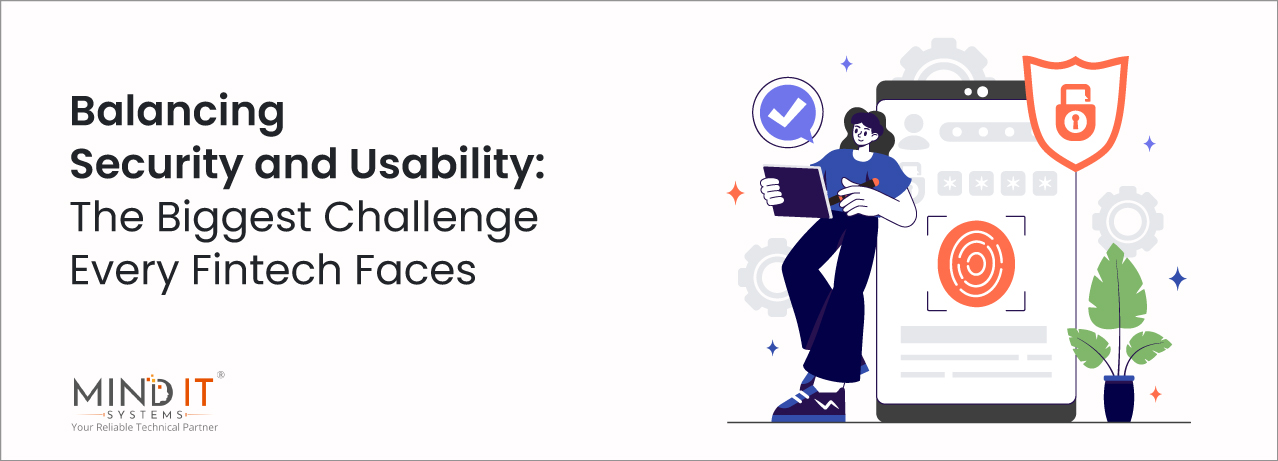
Balancing Security and Usability: The Biggest Challenge Every Fintech Faces
Introduction
Security shouldn’t slow users down—and convenience shouldn’t come at the cost of trust. Yet, for most fintech apps, that balance is the hardest thing to get right.
Imagine this: your fintech app has airtight security—military-grade encryption, multi-layer authentication, zero breaches. But users drop off in minutes. Why? Because logging in feels like solving a Rubik’s cube.
Now, flip it. Your app’s sleek, fast, and frictionless. Users love it—until a data breach makes headlines and trust vanishes overnight.
This is the impossible trade-off fintechs face every day. And in 2025, with AI, deepfakes, and real-time payment fraud on the rise, getting this balance wrong doesn’t just mean bad UX—it could mean regulatory penalties, loss of reputation, and churn you can’t recover from.
The real question is: how can product leaders create a platform that’s secure enough to trust but simple enough to love?
Let’s break it down.
Table of Contents
The Struggle Is Real: Key Challenges in Balancing Fintech Security and Usability
1. Regulatory Compliance vs. Innovation
Fintech companies operate in a pressure cooker—forced to constantly innovate while staying within strict regulatory frameworks like GDPR, PCI-DSS, or RBI guidelines. Every new feature needs to be cross-checked for compliance, which can slow innovation and paralyze UX enhancements.
While regulators want robust protections, users crave smooth and instant access. And fintechs? They’re stuck in the middle—balancing security and usability at every turn.
2. Security Layers Can Kill Flow
Every layer of security you add—OTP, CAPTCHA, document upload, selfie verification—adds friction. And while those steps prevent fraud, they also frustrate users looking for a fast, tap-and-go experience. Push too hard on either side, and you lose customers or compromise safety.
This is where smart fintech secure payment strategies can help—designing protection that doesn’t feel like a hurdle but a natural part of the experience.
3. User Resistance and Limited Awareness
Even if your security measures are solid, getting users to adopt them is another story. Many still use “123456” as a password. Introducing biometrics or multifactor authentication without overwhelming or confusing users is a communication challenge, not just a tech one.
The Solutions: Smarter Ways of Balancing Fintech Security and Usability
1. Design with Humans in Mind
The best fintech platforms put the user first, not compliance checklists or encryption specs. Adopt user-centric design principles that involve real users during testing. Use feedback loops to understand pain points and preferences—then design experiences that are intuitive yet secure.
Fintech platforms that focus on continuous customer feedback often strike the ideal balance — offering sleek, user-friendly interfaces while embedding powerful security features that users barely notice.
2. Invisible, Intelligent Security
Tools like behavioural biometrics, AI-powered fraud detection, and device fingerprinting offer robust protection while working silently in the background. This means users aren’t interrupted, but bad actors are flagged before damage occurs.
Stripe does this brilliantly—analyzing millions of real-time transactions using AI, stopping fraudulent activity without user disruption. It showcases effective secure payment methods and demonstrates how fintech can implement them successfully.
3. Embrace Layered but Seamless Security
Security doesn’t have to be obvious to be effective. Combine layers like tokenization, end-to-end encryption, biometric login, and risk-based authentication, but present them in digestible, non-intrusive ways. Let tech do the heavy lifting while users feel in control.
This layered approach enables continuous balancing of security and usability across different contexts, devices, and user behaviours.
4. Educate Without Overwhelming
If you’re rolling out a new security feature, guide your users. Use in-app nudges, visuals, and quick how-to. Make security awareness part of the UX, not a side-note.
For example, when switching from password to face ID, explain the why, the how, and the benefit—in seconds, not paragraphs.
Struggling to strike the right balance between user experience and fintech security? Talk to our experts to design user-first solutions.
Your Next Step: Build Trust with a Fintech Software Development Company
Balancing security and usability isn’t a one-and-done checklist—it’s a strategic mindset. You need tools, processes, and partners that let you innovate boldly without compromising trust.
Here’s how to get started:
- Audit both your UX and security layers regularly to identify where friction or risk lives.
- Involve your users early and often—feedback can reveal what logs, clicks, and tests won’t.
- Invest in emerging technologies shaping the fintech future, like AI, behavioural analytics, and blockchain.
- Collaborate with fintech security specialists who understand both compliance and customer-centricity.
Whether you’re modernizing an app or building one from scratch, working with an experienced fintech software development company is essential to execute secure, seamless solutions. They bring technical depth and domain-specific knowledge to balance security and usability while consistently enabling scale.
Let’s Build Smarter, Safer Fintech Together
At Mind IT Systems, a leading fintech software development company, we empower fintech firms to deliver secure, user-friendly experiences through solutions built with robust protection and intuitive design.
Whether you’re envisioning your next fintech product or improving your current app, our experts are ready to bring it to life. Let’s talk about your fintech goals.
Security and usability don’t have to compete—they can complement. Partner with us to build fintech apps your users trust and love.
Share this post
About the Author

Sujoy Roy
(Head – Digital Marketing)
From my teenage time, I had a quench to solve problems and loved leadership. Starting my career in relation management, ignited my passion for managing people. While managing I realized technology needs to be incorporated to keep pace with the changing world & do my work efficiently.

